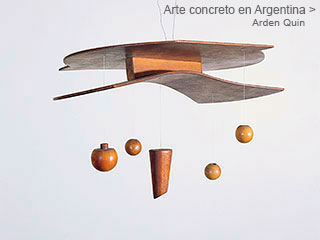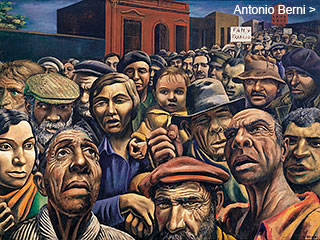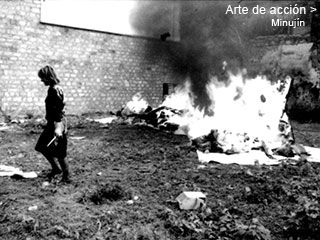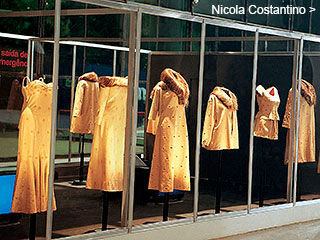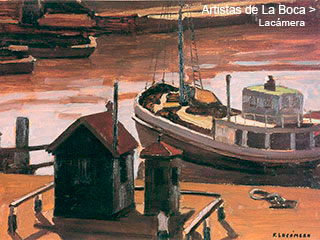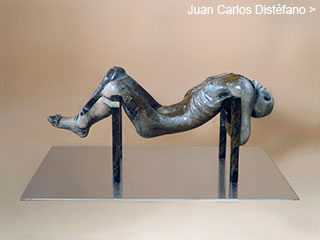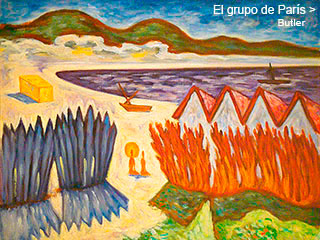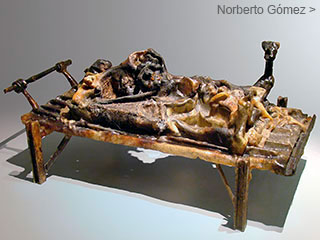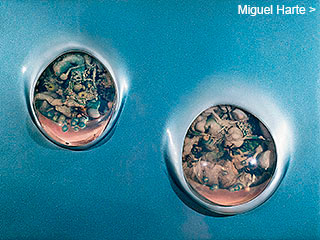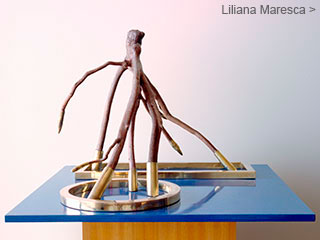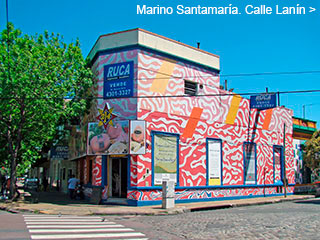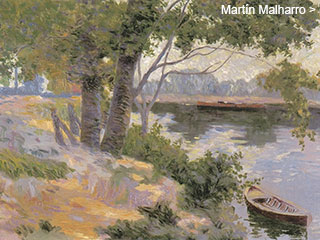Menú
Algunos dossiers
Ropa confeccionada con peletería humana, jabón fabricado con su propia grasa corporal y cañerías obstruidas con potrillos y terneros nonatos. Así se pueden describir algunas de las obras más características de Nicola Costantino, artista rosarina que muestra su producción en los circuitos internacionales más exigentes. Julio Sánchez recorre su vida y su obra.
Tami Katz-Freiman. “A Woman Wearing These Clothes Remains Practically Naked” en Boutique (Human Furriery) (catálogo exposición), Tel Aviv, Herzliya Museum of Art, 2002.
struggle for the politics of representation takes place. Being an external site, the boundary marking the borders of the organism, the skin becomes the metaphoric bulletin board of identity.
Costantino’s work emphasizes the defiance of social taboos, undermining the regime of prohibitions and conventions regarding that which is considered apt and orderly and that which is dubbed inapt, abnormal, contemptible and abject. The horror taking over the viewer when observing haute couture made of human skin calls to mind the horror evoked by the film Silence of the Lambs. Our sensitive, exposed and vulnerable skin, our front line of defense against the world, has become a shelf commodity It is the violation of that taboo that is so chilling, The interruption of order subverts everything included under the definitions of ‘culture’ and ‘good taste’.
In this spirit, one may talk about the nipple corset and hairy belly‑button coat as part of the discourse of the uncanny and repressed, the very heart of Surreal thought. A woman wearing these clothes remains practically naked. It is a visual tautology based on a distinctive Surreal syntax. In view of the fact that Surrealism became so naturally naturalized in Argentina, as in many other Latin American countries, it is particularly interesting to compare these pieces with Surreal objects such as Meret Oppenheim’s fur cup.
The blurring of identities, ironic mutations and macabre humor have all remained diversion strategies in discussing the fear of death. It seems nothing comes close to the fashion culture and joy of consumption as the ultimate diversions celebrating the transient and ephemeral. Costantino’s fashion items are, thus, yet another reminder of human hubris, a chic ‘vanitas’ collection, a type of
continúa


